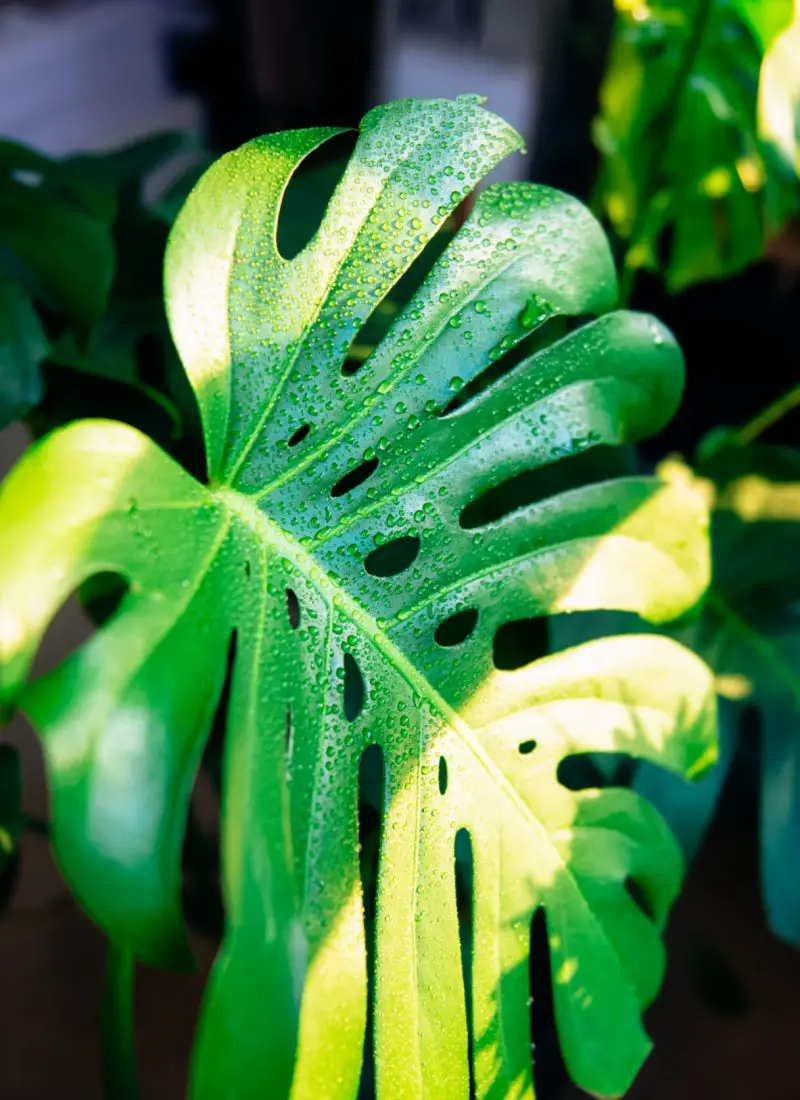
Rhaphidophora Tetrasperma is a cute gem of a plant. It is known to have split leaves like Monstera Deliciosa despite actually not being a Monstera plant itself. Because of their small stature, their stems are delicate and can be easily broken off accidentally. So… Can the plant be saved?
As a whole, it’s not possible to rejoin a broken stem from a Rhaphidophora Tetrasperma. It is better to propagate it instead. However, the original plant will continue to grow normally, provided the breakage wasn’t due to rot or fungal diseases.
Below, I provide tips on helping your Rhaphidophora Tetrasperma heal quickly with ways to propagate the broken stem itself:
(As an Amazon Associate, I earn from qualifying purchases.)
Not throwing shade but, if you drop a lot of plants (or own a cat who likes to commit planticide), here’s another article we wrote about this issue with money trees:
Can You Save a Money Tree with Broken Stems Easily?
Table of contents
How to Help a Broken Stemmed Rhaphidophora Tetraspema Recover?

- Provide plenty of indirect light but keep away from direct sun exposure. The plant typically receives light while surrounded by taller plants and trees in the wild. Emulating this environment will ensure the plant will heal faster without causing any leaf scorching. An ideal location for a Rhaphidophora Tetrasperma would be a bright room with curtained windows.
- Water the plant every 5-7 days when the top 1-2 inches of the soil dry out. When in doubt, use the knuckle test before watering each time. This plant prefers being in constantly moist soil and is generally intolerant of drought periods. Don’t forget that this is a crucial recovery period for your Rhaphidophora Tetrasperma to recover, so keeping its water conditions balanced is essential.
- Do not fertilize the plant at all. Fertilizers will only force the plant to work at full speed while still injured, worsening things. It’s like pushing a marathon runner to sprint with a sprained ankle. Take it easy on your plant and let it take its time to gradually get better.
- If you plan to repot the plant, ensure that the soil used is an airy, well-draining mixture. You can use a 3:7 ratio of perlite and potting soil (Amazon links), which will be just as good. Additionally, use adequately sized pots with drain holes to get rid of excess water and prevent overwatering. You want a moist soil environment for a Rhaphidophora Tetrasperma, not a clogged soil pool.
- Typically, this plant can handle indoor conditions quite well and is not too picky about the humidity levels. So be sure it is placed in a relatively warm room, away from cold drafts. If you can increase the humidity levels, that would make things even better for the plant. You can use any of these 3 methods mentioned here to do so.

- Lastly, ensure that the plant isn’t suffering from pests or disease problems. This is just to be sure that the reason for the broken stem isn’t due to existing issues. You need to mainly watch out for spider mites in this plant. Look under the leaves for tiny red dots or even wisps of spider web around the plant. You can find out more about this pest and how to get rid of them in this article. As for diseases, the most common thing to prevent and watch out for is root rot from overwatering.
How to Propagate The Broken Stem of a Rhaphidophora Tetrasperma?

- By Using the Stem Cutting Propagation Method.
This is a reliable way to propagate any broken stems. However, there are some things you need to ensure for the propagation to successfully take root:
- The broken stem needs to have at least 1 node. This looks like a swelled nub and it is where a new leaf would usually grow. In this case, it will be where you will attempt to get the roots to develop and propagate this stem piece. Ideally, 2-3 nodes give you a better chance of rooting.
- When rooting the broken stem directly in the soil, ensure that the potting mix is moist and the node is placed 1 inch below the soil level. It may take about a month or so for the roots to establish. You can check this by gently tugging the stem – if there is a resistance, roots have grown.
- When rooting the broken stem in water first, submerge the node underwater. But the 2 vital things to remember when doing this method is to avoid direct sunlight and change the water every 2-3 days. You want to prevent algae or bacterial growth in the water as the roots sprout. Once the roots are 2-3 inches long, transfer the stem gently into moist soil.

- By Using the Leaf Cutting Propagation Method.
This is a bit of a hit-or-miss method and may even take longer than the stem cutting propagation. But it’s worth trying if your broken stem doesn’t have any nodes for roots to sprout from, especially if you have a couple of leaves to spare.
- Place the leaf in moist soil, ensuring the petiole/leafstalk is 1 inch below the soil level.
- Use a stick to aid the leaf in staying upright if necessary.
- Try to prevent the leaf itself from touching the soil. This may lead to pathogens latching onto it.
Final Words
A Rhapidophora Tetrasperma’s broken stem is not a total lost cause when it does happen. The best thing we can do with it is to make the best of the situation. As long as your plant is healthy and doing well, it will recover just fine with the added bonus of a propagated one on its way to growing. Happy planting!
References:
https://extension.psu.edu/new-and-newsworthy-indoor-plants
https://thethriftedplanter.org/2022/02/10/how-to-grow-a-rhaphidophora-tetrasperma/
https://powo.science.kew.org/taxon/88594-1
https://garden.org/plants/view/317619/Rhaphidophora-tetrasperma/







Leave a Reply